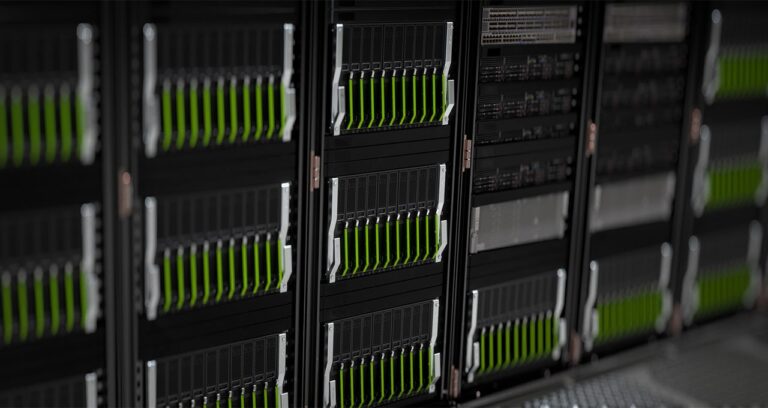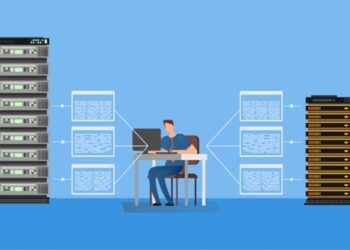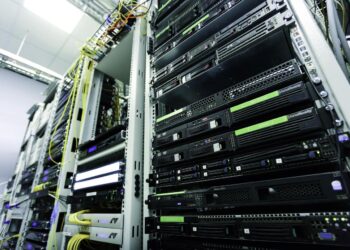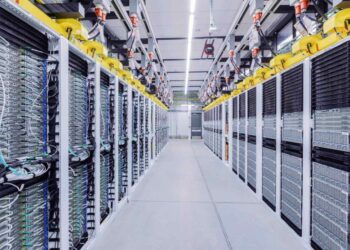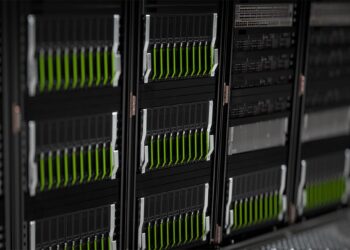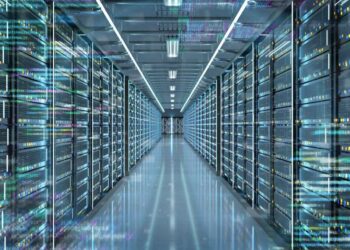In the rapidly expanding universe of artificial intelligence (AI), the demand for raw computational power is insatiable. From training colossal deep learning models to deploying lightning-fast inference engines, the need for specialized hardware that can process vast amounts of data with unparalleled speed is paramount. This is where NVIDIA steps in, not just as a chip manufacturer, but as the architect of the modern AI computing platform. The narrative of NVIDIA server AI acceleration isn’t simply about faster processing; it’s about a revolutionary approach to compute that has fundamentally transformed the capabilities of servers, making advanced AI feasible and accessible across industries. NVIDIA’s sustained leadership in this domain underscores its crucial role in driving the intelligence that powers everything from scientific discovery to everyday applications.
The Rise of AI and Computational Demands

The explosion of AI, particularly deep learning, has exposed the limitations of traditional CPU-centric computing. While CPUs excel at general-purpose tasks and sequential processing, they struggle with the massive parallel computations required for matrix multiplications and convolutions that are at the heart of neural networks. This is precisely where Graphics Processing Units (GPUs), initially designed for parallel rendering in gaming, found their true calling. Their architecture, featuring thousands of smaller, specialized cores, proved perfectly suited for the parallel nature of AI workloads.
NVIDIA seized this opportunity, evolving its GPUs from mere graphics processors into sophisticated AI accelerators. This strategic shift, combined with the development of a comprehensive software ecosystem, has positioned NVIDIA servers as the de facto standard for AI acceleration. The continuous innovation in NVIDIA’s server-grade GPUs, alongside its purpose-built AI platforms, is directly fueling the current wave of AI breakthroughs and enabling enterprises to unlock unprecedented levels of intelligence from their data.
Pillars of NVIDIA’s AI Server Acceleration
NVIDIA’s dominance in AI server acceleration is built upon a multi-faceted strategy that combines groundbreaking hardware with a robust software ecosystem and a strong focus on collaboration.
A. Specialized GPU Architectures
At the core of NVIDIA’s offering are its powerful server-grade GPUs, meticulously designed for the rigorous demands of AI and HPC.
- Tensor Cores: A revolutionary innovation introduced in NVIDIA’s Volta architecture and continuously refined, Tensor Cores are specialized processing units within the GPU that dramatically accelerate matrix operations, which are the fundamental building blocks of deep learning. They can perform mixed-precision calculations (e.g., FP16 with FP32 accumulation), significantly boosting performance while maintaining accuracy.
- CUDA Cores: These are the general-purpose parallel processing cores that handle a wide range of computational tasks, complementing the specialized Tensor Cores.
- High Bandwidth Memory (HBM): NVIDIA’s server GPUs feature extremely fast HBM, providing immense memory bandwidth to feed data to the hungry processing cores. This is critical for large AI models and datasets that would otherwise be bottlenecked by traditional DDR memory.
- Interconnect Technologies (NVLink, NVSwitch): For multi-GPU systems, NVIDIA developed NVLink, a high-speed, direct interconnect between GPUs (and increasingly between GPUs and CPUs like in IBM Power servers). This provides significantly higher bandwidth than PCIe, enabling GPUs to share data at lightning speed, crucial for scaling deep learning training across multiple accelerators. NVSwitch extends NVLink to create high-bandwidth, non-blocking connections between numerous GPUs in a single server or across multiple servers, forming powerful AI supercomputers.
- GPU Generations: NVIDIA continuously innovates with new GPU architectures (e.g., Ampere, Hopper), each offering significant generational leaps in performance, efficiency, and new features tailored for evolving AI models.
B. The CUDA Platform
NVIDIA’s success is not just about its hardware; it’s equally about its pioneering CUDA (Compute Unified Device Architecture) platform. CUDA is a parallel computing platform and programming model that makes it easier for developers to leverage the immense power of NVIDIA GPUs.
- Developer Ecosystem: CUDA has fostered a vibrant and extensive ecosystem of developers, researchers, and software vendors who write GPU-accelerated applications. This vast community is a critical competitive advantage for NVIDIA.
- Libraries and Frameworks: CUDA provides a rich set of libraries (e.g., cuDNN for deep neural networks, cuBLAS for linear algebra) that are highly optimized for GPU acceleration. It also offers seamless integration with popular AI frameworks like TensorFlow, PyTorch, and JAX, allowing researchers and developers to easily port their models to NVIDIA GPUs.
- Tools for Profiling and Debugging: NVIDIA provides comprehensive tools for profiling GPU code, identifying performance bottlenecks, and debugging applications, making it easier for developers to optimize their AI workloads.
- Backward Compatibility: NVIDIA maintains strong backward compatibility with CUDA, ensuring that applications developed on older GPU architectures can still run on newer ones, protecting customer investments.
C. Purpose-Built AI Computing Systems
Beyond individual GPUs, NVIDIA designs and collaborates on entire server systems optimized for AI workloads.
- NVIDIA DGX Systems: These are purpose-built AI supercomputers designed from the ground up for deep learning. DGX systems (e.g., DGX A100, DGX H100) integrate multiple powerful GPUs with NVLink and NVSwitch into a single, highly optimized server chassis. They come pre-configured with a complete AI software stack, including drivers, CUDA, libraries, and popular AI frameworks, significantly simplifying deployment and scaling for AI researchers and enterprises.
- NVIDIA HGX Platforms: HGX is a building block for server manufacturers. It consists of GPU baseboards (e.g., HGX A100, HGX H100) that integrate multiple GPUs with NVLink and NVSwitch. Server vendors (like Dell, HPE, Lenovo, Supermicro, Cisco) then design their own servers around these HGX platforms, allowing them to bring NVIDIA’s AI acceleration to their broad customer base.
- AI Infrastructure as a Service: NVIDIA partners with major cloud providers (AWS, Azure, Google Cloud, Oracle Cloud) to offer NVIDIA GPUs and DGX systems as cloud instances, making powerful AI acceleration accessible on a pay-as-you-go basis.
D. Full-Stack AI Software Ecosystem (NVIDIA AI Enterprise)
NVIDIA’s approach extends beyond hardware to a comprehensive software stack tailored for enterprise AI.
- NVIDIA AI Enterprise: This is a software suite optimized for NVIDIA GPUs, providing a full stack of AI and data analytics software, including AI frameworks, pre-trained models, libraries, and management tools. It’s designed to make enterprise AI development and deployment more efficient and reliable.
- NVIDIA Omniverse: A platform for building and operating metaverse applications and digital twins, Omniverse leverages NVIDIA’s GPU technology for real-time 3D simulation and collaboration, with significant implications for industrial AI and robotics.
- NVIDIA NeMo: A framework for building, customizing, and deploying large language models (LLMs) and other generative AI models. It leverages NVIDIA’s accelerated computing for efficient LLM training and inference.
- AI Developer Tools and SDKs: NVIDIA provides a vast array of SDKs and tools for various AI disciplines, including computer vision (DeepStream, TAO Toolkit), natural language processing (NVIDIA Riva), and robotics (Isaac ROS).
E. Strategic Collaborations and Industry Influence
NVIDIA actively collaborates with virtually every major player in the enterprise IT ecosystem, cementing its leadership.
- Server OEM Partnerships: Deep partnerships with Dell, HPE, Lenovo, Supermicro, Cisco, and others ensure that NVIDIA GPUs and HGX platforms are integrated into a wide array of enterprise server offerings.
- Cloud Service Provider Alliances: Collaborations with AWS, Microsoft Azure, Google Cloud, Oracle Cloud, and others make NVIDIA GPUs available in their respective cloud platforms, expanding reach and accessibility.
- Academic and Research Community: NVIDIA maintains strong ties with universities and research institutions, providing access to its technology and fostering the next generation of AI talent and breakthroughs.
- Industry Standards Bodies: Active participation in industry standards to shape the future of accelerated computing.
- Acquisition of Mellanox: The acquisition of Mellanox (now NVIDIA Networking) brought leading InfiniBand and Ethernet networking technologies into the NVIDIA portfolio. This is crucial for high-performance interconnects between servers in large-scale AI and HPC clusters, eliminating bottlenecks in data transfer between computing nodes.
The Impact of NVIDIA AI Acceleration on Servers
NVIDIA’s innovations have fundamentally changed the role and capabilities of servers in the AI era.
F. Accelerated AI Model Training
- Faster Iteration Cycles: The ability to train deep learning models dramatically faster means researchers and data scientists can iterate more quickly, experiment with more architectures, and ultimately develop more accurate and powerful AI models in less time.
- Handling Larger Models: NVIDIA GPUs enable the training of increasingly massive AI models (e.g., large language models with billions or trillions of parameters) that would be computationally impossible on CPUs alone.
- Reduced Training Costs: While GPUs have an upfront cost, their acceleration capabilities can significantly reduce the overall cost of training AI models by cutting down compute time and associated infrastructure usage.
G. Efficient AI Inference at Scale
- Real-time AI Applications: NVIDIA GPUs enable real-time AI inference in production environments, crucial for applications like autonomous vehicles, facial recognition, real-time fraud detection, and personalized recommendations.
- Edge AI Acceleration: NVIDIA’s Jetson platform and ruggedized GPUs bring AI inferencing capabilities to the edge (e.g., cameras, robots, industrial IoT devices), allowing for immediate local decision-making without relying on cloud connectivity.
- Optimized Deployment: NVIDIA provides tools and runtimes like NVIDIA TensorRT to optimize trained AI models for efficient inference on GPUs, maximizing throughput and minimizing latency in production.
H. High-Performance Computing (HPC) Revolution
- Scientific Discovery: GPUs have become indispensable for HPC, accelerating scientific simulations in fields like molecular dynamics, weather forecasting, materials science, and astrophysics, leading to faster research breakthroughs.
- Reduced Time to Solution: Complex scientific problems that once took months or years on CPU clusters can now be solved in days or weeks with GPU acceleration.
- Energy Efficiency: While powerful, GPUs can offer a significantly higher performance-per-watt ratio for parallel workloads compared to CPUs, contributing to more energy-efficient supercomputing.
I. Data Center Transformation
- Increased Density: GPU-accelerated servers pack immense computational power into a smaller footprint compared to CPU-only servers for parallel workloads, leading to higher compute density in data centers.
- Specialized Racks and Cooling: The power and heat generated by dense GPU servers require specialized rack designs, more robust power delivery, and increasingly, advanced cooling solutions (e.g., direct-to-chip liquid cooling) to maintain optimal performance and efficiency.
- Software-Defined Infrastructure: NVIDIA’s software stack and management tools enable a more software-defined approach to managing GPU-accelerated infrastructure, simplifying deployment and orchestration.
Challenges and Future Outlook
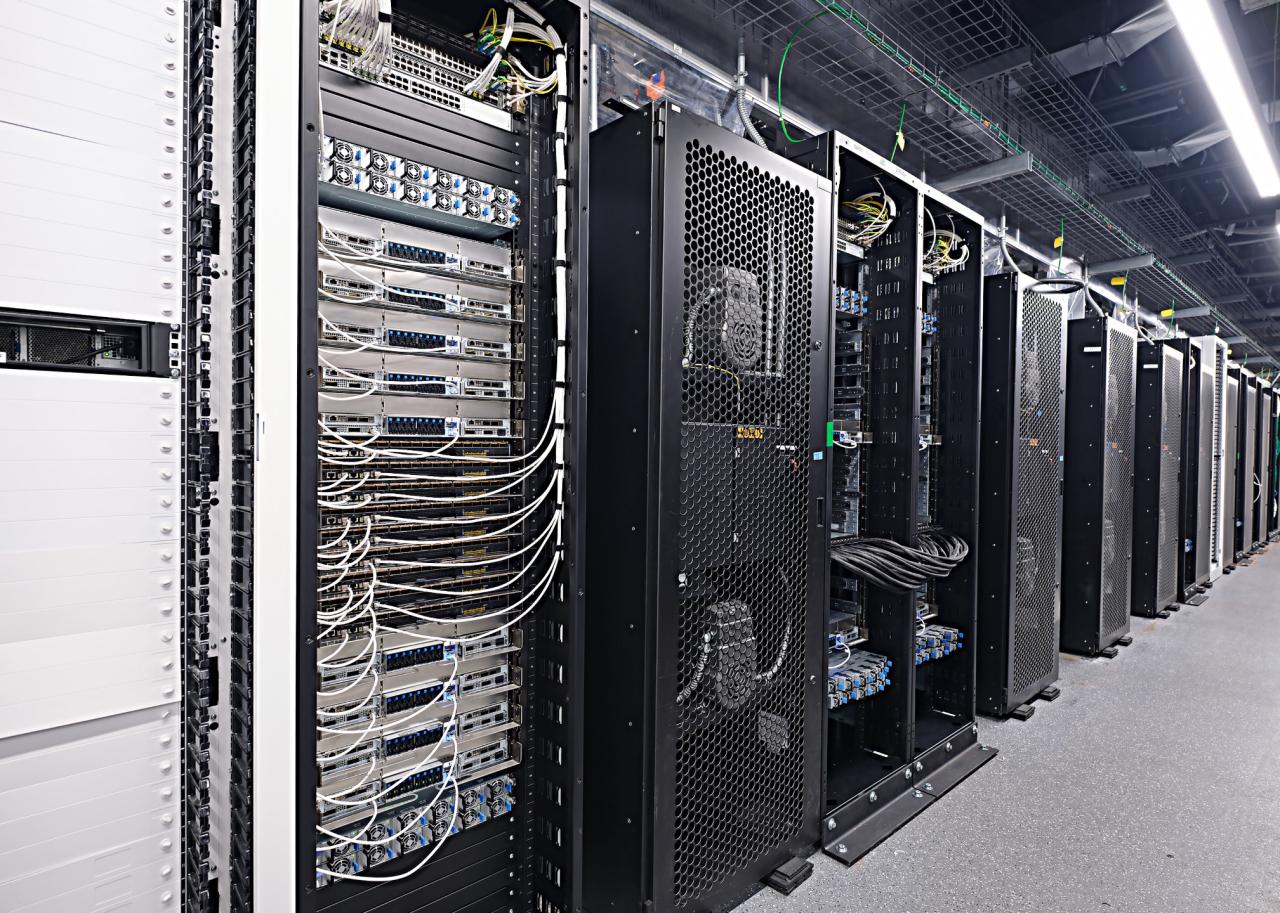
Despite its leading position, NVIDIA navigates a dynamic landscape with ongoing challenges and exciting future trajectories.
J. Competition and Alternative Architectures
- Intel and AMD: While behind in AI acceleration, Intel and AMD are investing heavily in their own GPU solutions (e.g., Intel Gaudi, Intel Xe, AMD Instinct) and specialized AI accelerators, posing future competition.
- Hyperscale Cloud Custom Chips: Major cloud providers (Google with TPUs, AWS with Inferentia/Trainium) are developing their own custom AI chips, potentially reducing their reliance on external GPU vendors for some workloads.
- Startups and Specialized Accelerators: Numerous startups are emerging with highly specialized AI accelerators (e.g., Cerebras, Graphcore) targeting specific AI workloads, offering niche competition.
K. Supply Chain Volatility and Geopolitics
- Chip Shortages: The global semiconductor shortage has impacted GPU availability, affecting NVIDIA’s ability to meet demand.
- Geopolitical Tensions: Export restrictions and geopolitical factors can impact NVIDIA’s ability to sell its most advanced AI chips to certain markets.
L. Power Consumption and Cooling
- Increasing Power Needs: As GPUs become more powerful, their power consumption increases, necessitating more robust power delivery infrastructure and advanced cooling solutions (especially liquid cooling) in data centers.
- Energy Efficiency: While performance per watt is high, the absolute power consumption of large GPU clusters is significant, prompting a continuous focus on energy efficiency.
M. Software Development Complexity
- CUDA Lock-in: While a strength, the reliance on CUDA can be perceived as a form of vendor lock-in. Developers invested in other parallel computing frameworks (e.g., OpenCL) or non-NVIDIA hardware might face migration challenges.
- Complexity of Parallel Programming: While simplified by CUDA, parallel programming for GPUs still requires specialized skills and expertise.
N. Accessibility and Cost
- High Cost: Advanced NVIDIA server GPUs and DGX systems represent a significant investment, making them primarily accessible to large enterprises and research institutions.
- Democratization of AI: While cloud offerings help, making powerful AI acceleration truly accessible and affordable for smaller businesses and individual developers remains an ongoing challenge.
Conclusion
The narrative of NVIDIA server AI acceleration is a story of visionary leadership, relentless innovation, and strategic ecosystem building. By transforming the GPU into the primary engine for AI and HPC, developing the ubiquitous CUDA platform, and designing purpose-built AI computing systems like the DGX and HGX, NVIDIA has not only captured a dominant market share but has also fundamentally enabled the current AI revolution.
NVIDIA’s full-stack approach, from silicon to software (NVIDIA AI Enterprise) and extensive strategic partnerships, ensures that its server solutions are at the forefront of every major AI and accelerated computing breakthrough. While challenges in competition, supply chain, and power management persist, NVIDIA’s continuous pursuit of higher performance, greater efficiency, and broader accessibility positions it to remain the central force driving the intelligence that will define the next era of computing. For any organization serious about leveraging AI at scale, NVIDIA’s server acceleration platforms are the indispensable foundation.

